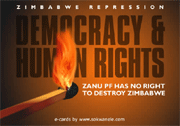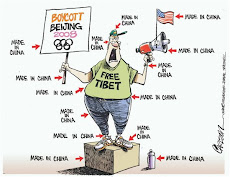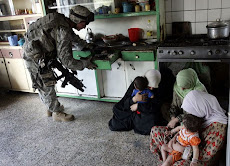 April 20th. NY Times:
April 20th. NY Times: - Even as he was flying to the United States, Pope benedict XVI
, spoke of protecting immigrant families, not dividing them. He raised the issue again in a meeting on Wednesday with President Bush, and later that day spoke in Spanish to the church’s “many immigrant children.” And when he ends his visit to New York on Sunday, he will be sent off by a throng of the faithful, showing off the ethnic diversity of American Catholicism. The choreography underscores the importance to the church here of its growing diversity — especially its increasing Hispanic membership. Of the nation’s 65 million Roman Catholics, 18 million are Latino, according to the Pew Forum on Religion and Public Life, and they account for more than two-thirds of the new Catholics in the country since 1960. Millions of other recent arrivals come from Asia and Africa. More and more parishes depend on priests brought from abroad to serve the flock.
Benedict has calibrated his immigration stance with care, stating the need to protect family unity and immigrants’ human rights, but pointedly avoiding any specifics of the American immigration debate, like the issue of whether to grant legal status to illegal immigrants. Yet last week his visit quickly stirred the crosscurrents of the debate. His comments drew a rebuke from Representative Tom Tancredo, a Republican from Colorado who has been a leading opponent of illegal immigration. Accusing the pope of “faith-based marketing,” Mr. Tancredo said Benedict’s comments welcoming immigrants “may have less to do with spreading the Gospel than they do about recruiting new members of the Church.” Mr. Tancredo, a former Catholic who now attends an evangelical Christian church, said it was not in the pope’s “job description to engage in American politics.” On the other side of the issue, some members of the Catholic hierarchy said they were shocked that on the same day that Benedict and President Bush affirmed in a joint statement the need for a policy that treats immigrants humanely and protects their families, federal agents were conducting raids at five chicken plants. They arrested more than 300 immigrants accused of being illegal workers. The timing was coincidental, immigration officials said, and it was not clear whether the pope had known about the arrests when he met with Mr. Bush. But the raids surprised some American Catholic leaders, who are often on the forefront of advocacy for immigrant rights. “I was stunned,” said Cardinal Roger Mahony, the archbishop of Los Angeles, the nation’s largest Roman Catholic diocese and one with many Hispanics. “I just feel these raids are totally negative. I thought it was very inappropriate to do it in such a blatant way when the pope was coming, when he has been so outspoken in defending the rights of immigrants.”
The American bishops have been consistently outspoken in favor of legislation to give legal status to illegal immigrants and expand legal avenues for immigrants to bring their family members from abroad. They and other Catholic activists were among the most visible supporters of a broad bill, supported by Mr. Bush but not enacted by Congress last year, which included a path to legal status for 12 million illegal immigrants. They took Benedict’s statements last week as affirmation of their work. For while the immigration theme has been overshadowed during Benedict’s trip by his denunciations of the sexual abuse scandal in the church, it was the second issue after the abuse cases that he addressed on the plane from Rome, when he responded to reporters’ questions that were submitted in advance and picked by the Vatican. The separation of families “is truly dangerous for the social, moral and human fabric” of Latin and Central American families, the pope told reporters aboard his plane. “The fundamental solution is that there should no longer be a need to emigrate, that there are enough jobs in the homeland, a sufficient social fabric,” he said. Short of that, families should be protected, not destroyed, he said. “As much as it can be done it should be done,” the pontiff said.
The pope did not just send a message to the president and the public, he spoke to the bishops. In his private meeting with them on Wednesday evening, he emphasized that recent newcomers to the United States are “people of faith, and we are here to welcome them,” Cardinal Mahony said. The pope also dwelled on the negative impact of family separation. Several bishops took that as a direct reference to the impact of previous immigration raids and deportations, in which illegal immigrant parents were separated from spouses and children who were United States citizens or legal immigrants. “Obviously the Holy Father is not encouraging people to do anything illegal,” Cardinal Mahony said. But the raids “do not serve as a deterrent,” he said, adding, “They simply create fear and uncertainty in our communities.”Times reporters and experts discuss Benedict XVI’s papacy and his visit to the United States.
Bishop John Wester of Salt Lake City said the pope was “not going to get into the specific points that our country has to hash out.” Bishop Wester, who is chairman of the Committee on Migration of the United States Conference of Catholic Bishops, said the pontiff had told the bishops “very clearly that we need to attend to the basic human rights immigrants have.” Bishop Wester also criticized the immigration raids, which took place at plants in five states belonging to Pilgrim’s Pride, a major poultry processing company. Immigration officials said they did not consider the pope’s visit when planning the operations, which they said came after a yearlong investigation. But Bishop Wester said: “It did strike me as inappropriate. The pope comes as a man of peace, a man of good will, the leader of a major religion. Many of the persons arrested were Catholic.” As recently as mid-March, he said, his committee met with Julie L. Myers, the head of Immigration and Customs Enforcement, the agency that carried out the raids. The bishops asked Ms. Myers not to conduct raids in churches and to ensure legal representation for immigrants, Bishop Wester said.
The pope returned to the theme several times over the course of his visit, which ends Sunday. About 4,000 church members from the Diocese of Brooklyn, which includes Queens, will hold a prayer service in 29 languages at Kennedy Airport. About half will be immigrants, said Msgr. Ronald T. Marino, the Brooklyn Diocese’s vicar for migration. Many will wear the costumes of their homelands. The pope will not attend, but the crowd will bid him farewell. “Not a word has to be spoken,” the monsignor said. “What you will see says it all.” In Washington, Benedict encouraged the American bishops and their communities “to continue to welcome immigrants who join your ranks today, to share their joys and hopes, to support them in their sorrows and trials, and to help them flourish in their new home.” That, he said, was the American tradition. And in a meeting with Catholic educators, he emphasized the importance of keeping Catholic schools open, especially to serve immigrants and the underprivileged. Catholic leaders say such words have bolstered their work, yet the pope’s emphasis is no surprise in a country where much of the church’s growth and vitality comes from the influx of immigrant Catholics.
Following the polyglot practice of his predecessor, John Paul II, Benedict used Spanish to directly address the Latino portion of his flock during the homily at his Mass at Nationals Park in Washington on Thursday. The Church has grown thanks to their vitality, he said, and God calls on them to keep contributing. Priests and bishops who lobby elected officials and minister directly to immigrants can be more explicit. Monsignor Marino, for example, who also heads the Brooklyn Diocese’s Catholic Migration Office, said, “In my judgment, immigrants are heroes.” He applauded the pope’s words. “The simple pointing to it as one of his priorities, something coming out of his mouth, is real important,” Monsignor Marino said. “For him to say one sentence means he knows the rest.” Thomas G. Wenski, the bishop of Orlando, Fla., and a former head of the bishops’ Migration Committee who remains a consultant to it, said he hoped the pope’s visit would have a practical effect. “The pope’s visit will unleash some good will here so that Congress might live up to its responsibility and deal with the issue,” Bishop Wenski said.
In a letter in December, Cardinal Mahony chastised all the presidential candidates for campaigns that he said had “inflamed anti-immigrant sentiment in the country.” Since then the three remaining candidates, Senators John McCain of Arizona, Hillary Rodham Clinton of New York and Barack Obama of Illinois, have lowered the volume on the immigration issue. Secular advocates for immigrants also welcomed the pope’s words. “That’s big news,” said Teresa Gutierrez, a coordinator for the May 1st Coalition for Immigrant and Workers Rights. “Any decent comment about the reality of what’s really happening to immigration in the United States coming from such a prestigious person as the pope is extremely helpful.”
by Daniel J. Walkin and Julia Preston
+++++++++++++++++++++++++++++++++++++++++++++++++++
Disclaimer
No responsibility or liability shall attach itself to either myself or to the blogspot ‘Mozlink’ for any or all of the articles/images placed here. The placing of an article does not necessarily imply that I agree or accept the contents of the article as being necessarily factual in theology, dogma or otherwise.
Mozlink
 UNITED NATIONS, April 22 (Reuters) - Security Council members voiced anger on Tuesday at moves by Eritrea to force a U.N. peacekeeping mission to leave its border with Ethiopia, but postponed a decision on how to respond. "The members of the council were unanimous in that the way the peacekeepers of UNMEE (the U.N. force) have been treated in Eritrea is totally unacceptable," South African Ambassador Dumisani Kumalo, current council president, told reporters. The United Nations has almost completely withdrawn some 1,700 troops and military observers from a buffer zone along the border between the two Horn of Africa rivals after Asmara cut fuel supplies to the mission. Eritrea said countrywide shortages had prompted the move, but President Isaias Afwerki said last week the continued presence of U.N. peacekeepers on the Red Sea state's border with Ethiopia, scene of a 1998-200 war, was illegal.
UNITED NATIONS, April 22 (Reuters) - Security Council members voiced anger on Tuesday at moves by Eritrea to force a U.N. peacekeeping mission to leave its border with Ethiopia, but postponed a decision on how to respond. "The members of the council were unanimous in that the way the peacekeepers of UNMEE (the U.N. force) have been treated in Eritrea is totally unacceptable," South African Ambassador Dumisani Kumalo, current council president, told reporters. The United Nations has almost completely withdrawn some 1,700 troops and military observers from a buffer zone along the border between the two Horn of Africa rivals after Asmara cut fuel supplies to the mission. Eritrea said countrywide shortages had prompted the move, but President Isaias Afwerki said last week the continued presence of U.N. peacekeepers on the Red Sea state's border with Ethiopia, scene of a 1998-200 war, was illegal.




























































